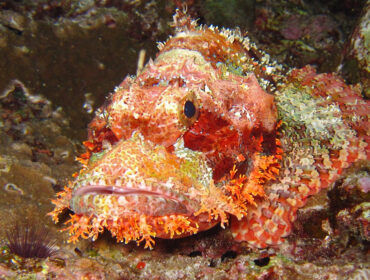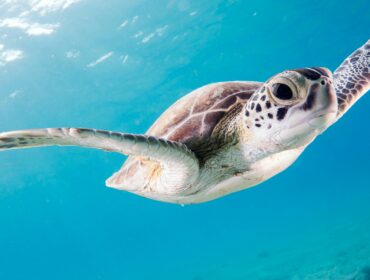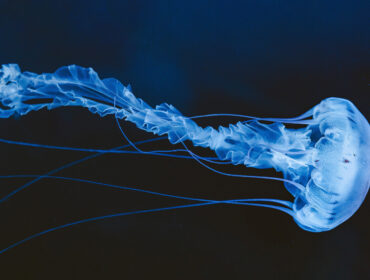While whales in general are getting a big boost in the spotlight due to increasing awareness of marine conservation, there are many whale species that are relatively unknown to most people. Ranging in size and found all over the world, these rarely seen and little-studied whale species can dive to incredible depths and inhabit some of the most inhospitable seas on the planet, contributing to their somewhat enigmatic status in the marine world. Although there are certainly more than five relatively unknown whale species, these five captured our attention for their particularly unique characteristics.
Sei Whale
The Sei whale is a type of baleen whale. It uses its baleen plates, or teeth, to filter plankton and krill into its mouth. Adults can range in size between 45 feet and 64 feet long depending on what part of the world they live in. This whale species inhabits most of the world’s oceans and seas, avoiding only polar and tropical regions, as well as semi-enclosed water bodies. The massive sei whale feeds on the ocean’s tiniest creatures, including zooplankton, krill, and copepods, consuming up to 2,000 lbs per day just to survive.
Melon-Headed Whale
The melon-headed whale is one of the smaller whale species, growing to approximately 9.8 feet in length. These whales are closely related to pilot whales, pygmy killer whales and false killer whales. Their rounded heads are the basis for the name ‘melon-headed whale’, but the bump is not as prominent in profile, which allows researchers a bit of distinction between them and their pygmy killer whale cousins. This whale species prefers the deep tropical and sub-tropical waters of the world.
False Killer Whale
False killer whales are similar in appearance to true killer whales, although much smaller. Their coloring differs from the killer whale in that they sport grey throats and bellies, rather than the distinctive white markings of an orca. This species most often found beyond the continental shelf of tropical regions like Hawaii and the Philippines, but it is not uncommon to spot false killer whales in temperate zones from time to time.
Narwhal
Living predominately in the Arctic, the narwhal is a whale that many people have only heard referred to as the “unicorn of the sea.” It is unique among all whale species for its large tusk that is actually an extended left canine tooth. Their current endangerment status is near threatened due to climate change and increasingly shrinking sea ice, leaving them exposed to hunters and collisions with vessels of all kinds.
Bottlenose Whale
One of the rarest species is the tropical bottlenose whale. These whales bear a resemblance to bottlenose dolphins and have even been known to travel with them at times. Little is known about the population of these whales in the wild or the full range of their territory, but they are thought to be molluscivorous, subsisting primarily on squid, and are capable of diving to depths between 500-1,500 meters.




